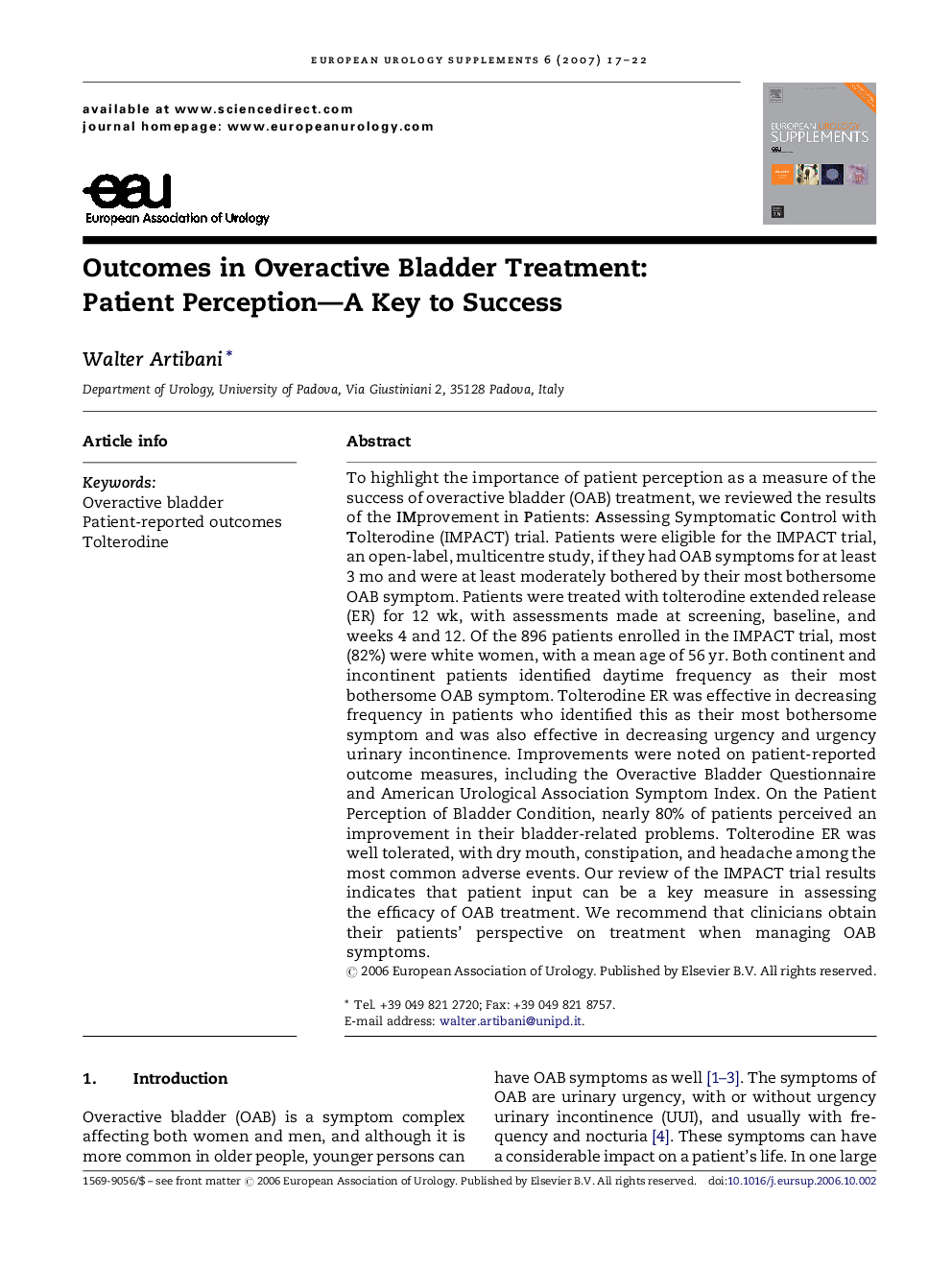| Article ID | Journal | Published Year | Pages | File Type |
|---|---|---|---|---|
| 3931145 | European Urology Supplements | 2007 | 6 Pages |
To highlight the importance of patient perception as a measure of the success of overactive bladder (OAB) treatment, we reviewed the results of the IMprovement in Patients: Assessing Symptomatic Control with Tolterodine (IMPACT) trial. Patients were eligible for the IMPACT trial, an open-label, multicentre study, if they had OAB symptoms for at least 3 mo and were at least moderately bothered by their most bothersome OAB symptom. Patients were treated with tolterodine extended release (ER) for 12 wk, with assessments made at screening, baseline, and weeks 4 and 12. Of the 896 patients enrolled in the IMPACT trial, most (82%) were white women, with a mean age of 56 yr. Both continent and incontinent patients identified daytime frequency as their most bothersome OAB symptom. Tolterodine ER was effective in decreasing frequency in patients who identified this as their most bothersome symptom and was also effective in decreasing urgency and urgency urinary incontinence. Improvements were noted on patient-reported outcome measures, including the Overactive Bladder Questionnaire and American Urological Association Symptom Index. On the Patient Perception of Bladder Condition, nearly 80% of patients perceived an improvement in their bladder-related problems. Tolterodine ER was well tolerated, with dry mouth, constipation, and headache among the most common adverse events. Our review of the IMPACT trial results indicates that patient input can be a key measure in assessing the efficacy of OAB treatment. We recommend that clinicians obtain their patients’ perspective on treatment when managing OAB symptoms.
